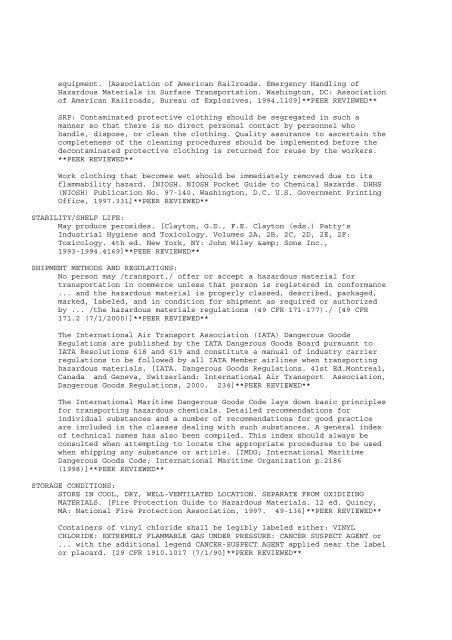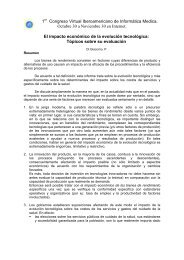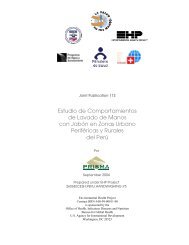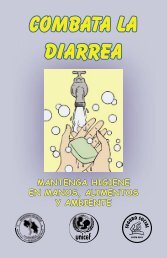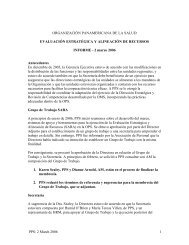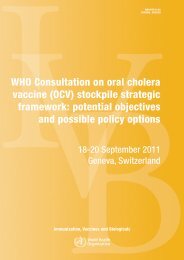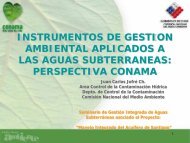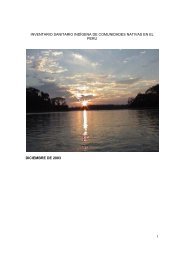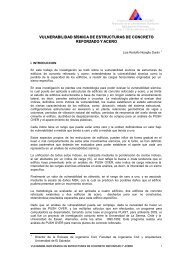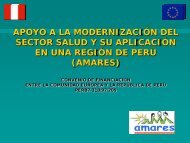a database of the National Library of M
a database of the National Library of M
a database of the National Library of M
You also want an ePaper? Increase the reach of your titles
YUMPU automatically turns print PDFs into web optimized ePapers that Google loves.
equipment. [Association <strong>of</strong> American Railroads. Emergency Handling <strong>of</strong>Hazardous Materials in Surface Transportation. Washington, DC: Association<strong>of</strong> American Railroads, Bureau <strong>of</strong> Explosives, 1994.1109]**PEER REVIEWED**SRP: Contaminated protective clothing should be segregated in such amanner so that <strong>the</strong>re is no direct personal contact by personnel whohandle, dispose, or clean <strong>the</strong> clothing. Quality assurance to ascertain <strong>the</strong>completeness <strong>of</strong> <strong>the</strong> cleaning procedures should be implemented before <strong>the</strong>decontaminated protective clothing is returned for reuse by <strong>the</strong> workers.**PEER REVIEWED**Work clothing that becomes wet should be immediately removed due to itsflammability hazard. [NIOSH. NIOSH Pocket Guide to Chemical Hazards. DHHS(NIOSH) Publication No. 97-140. Washington, D.C. U.S. Government PrintingOffice, 1997.331]**PEER REVIEWED**STABILITY/SHELF LIFE:May produce peroxides. [Clayton, G.D., F.E. Clayton (eds.) Patty'sIndustrial Hygiene and Toxicology. Volumes 2A, 2B, 2C, 2D, 2E, 2F:Toxicology. 4th ed. New York, NY: John Wiley & Sons Inc.,1993-1994.4169]**PEER REVIEWED**SHIPMENT METHODS AND REGULATIONS:No person may /transport,/ <strong>of</strong>fer or accept a hazardous material fortransportation in commerce unless that person is registered in conformance... and <strong>the</strong> hazardous material is properly classed, described, packaged,marked, labeled, and in condition for shipment as required or authorizedby ... /<strong>the</strong> hazardous materials regulations (49 CFR 171-177)./ [49 CFR171.2 (7/1/2000)]**PEER REVIEWED**The International Air Transport Association (IATA) Dangerous GoodsRegulations are published by <strong>the</strong> IATA Dangerous Goods Board pursuant toIATA Resolutions 618 and 619 and constitute a manual <strong>of</strong> industry carrierregulations to be followed by all IATA Member airlines when transportinghazardous materials. [IATA. Dangerous Goods Regulations. 41st Ed.Montreal,Canada and Geneva, Switzerland: International Air Transport Association,Dangerous Goods Regulations, 2000. 234]**PEER REVIEWED**The International Maritime Dangerous Goods Code lays down basic principlesfor transporting hazardous chemicals. Detailed recommendations forindividual substances and a number <strong>of</strong> recommendations for good practiceare included in <strong>the</strong> classes dealing with such substances. A general index<strong>of</strong> technical names has also been compiled. This index should always beconsulted when attempting to locate <strong>the</strong> appropriate procedures to be usedwhen shipping any substance or article. [IMDG; International MaritimeDangerous Goods Code; International Maritime Organization p.2186(1998)]**PEER REVIEWED**STORAGE CONDITIONS:STORE IN COOL, DRY, WELL-VENTILATED LOCATION. SEPARATE FROM OXIDIZINGMATERIALS. [Fire Protection Guide to Hazardous Materials. 12 ed. Quincy,MA: <strong>National</strong> Fire Protection Association, 1997. 49-136]**PEER REVIEWED**Containers <strong>of</strong> vinyl chloride shall be legibly labeled ei<strong>the</strong>r: VINYLCHLORIDE: EXTREMELY FLAMMABLE GAS UNDER PRESSURE: CANCER SUSPECT AGENT or... with <strong>the</strong> additional legend CANCER-SUSPECT AGENT applied near <strong>the</strong> labelor placard. [29 CFR 1910.1017 (7/1/90]**PEER REVIEWED**


